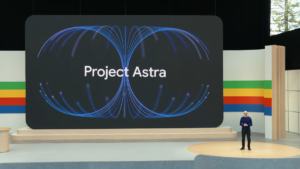DeepMind Announces Plans to Utilize AI Models for Driving Physical Robots

Google’s DeepMind and Its Use of AI in Physical Robots
Google’s DeepMind is making notable strides in artificial intelligence (AI), targeting a groundbreaking integration of its advanced AI models to enhance physical robots. As technology continues to evolve, this initiative represents a major development in how intelligent systems can play a role in our daily lives.
What is DeepMind?
DeepMind, a subsidiary of Alphabet Inc., is recognized as one of the world’s leading AI research organizations. Founded in 2010, the company gained fame for its innovative advancements in AI, particularly in reinforcement learning, neural networks, and deep learning. Their research has led to significant breakthroughs in various fields, from gaming to healthcare, and is now expanding into robotics.
The Rise of AI in Robotics
Transforming Industries
The integration of AI in robotics is not merely a trend but a transformation that is reshaping multiple industries. The capabilities of robots powered by AI can automate various tasks, improving efficiency and effectiveness.
Manufacturing: Robots equipped with AI are already used in factories, enhancing production line processes and increasing safety by handling dangerous tasks.
Healthcare: AI in robots can assist in surgeries, patient care, and diagnosis, ensuring precision and boosting healthcare outcomes.
Logistics: AI-driven robots are increasingly essential in warehouses and distribution centers, optimizing inventory management and delivery systems.
- Home Assistance: Developers are creating AI robots to aid in household chores, offering convenience and saving time for individuals and families.
DeepMind’s Approach to Robotics
Utilizing AI Models
DeepMind aims to leverage its powerful AI models to improve robotic functions. By equipping robots with advanced capabilities, they can perform more complex tasks with higher autonomy. This shift focuses on enabling robots to learn from their environments and adapt their actions based on real-time data.
Key Innovations
Here are some innovative approaches DeepMind is incorporating:
Reinforcement Learning: This technique allows robots to learn through trial and error, enhancing their ability to perform tasks independently.
Neural Networks: Using neural networks, robots can process vast amounts of data and recognize patterns, making them more effective at decision-making.
- Simulation Environments: By creating virtual environments, DeepMind enables robots to train safely and test their abilities without physical risks.
Challenges Facing AI Robotics
While the integration of AI into robotics brings numerous advantages, it is not without its challenges:
Safety Concerns: Ensuring the safety of humans interacting with robots is paramount. Rigorous testing must be implemented to prevent accidents.
Ethical Implications: The use of AI in decision-making raises ethical questions about accountability and bias, requiring careful consideration in their application.
Technical Limitations: Developing AI that can effectively handle the complexities of the real world remains a significant technical hurdle.
- Public Perception: Gaining public trust in AI-powered robots is crucial, as concerns about job displacement and privacy persist.
The Future of AI and Robotics
The collaboration between AI and robots signifies a promising future where machines can undertake a wider array of tasks in society. As DeepMind continues to innovate, the focus will be on creating robots that work alongside humans rather than replacing them, improving productivity while enhancing life quality.
By tapping into the potential of AI, companies like DeepMind are at the forefront of ushering in a new era of robotics, where human-robot collaboration will become commonplace and beneficial across numerous sectors.





